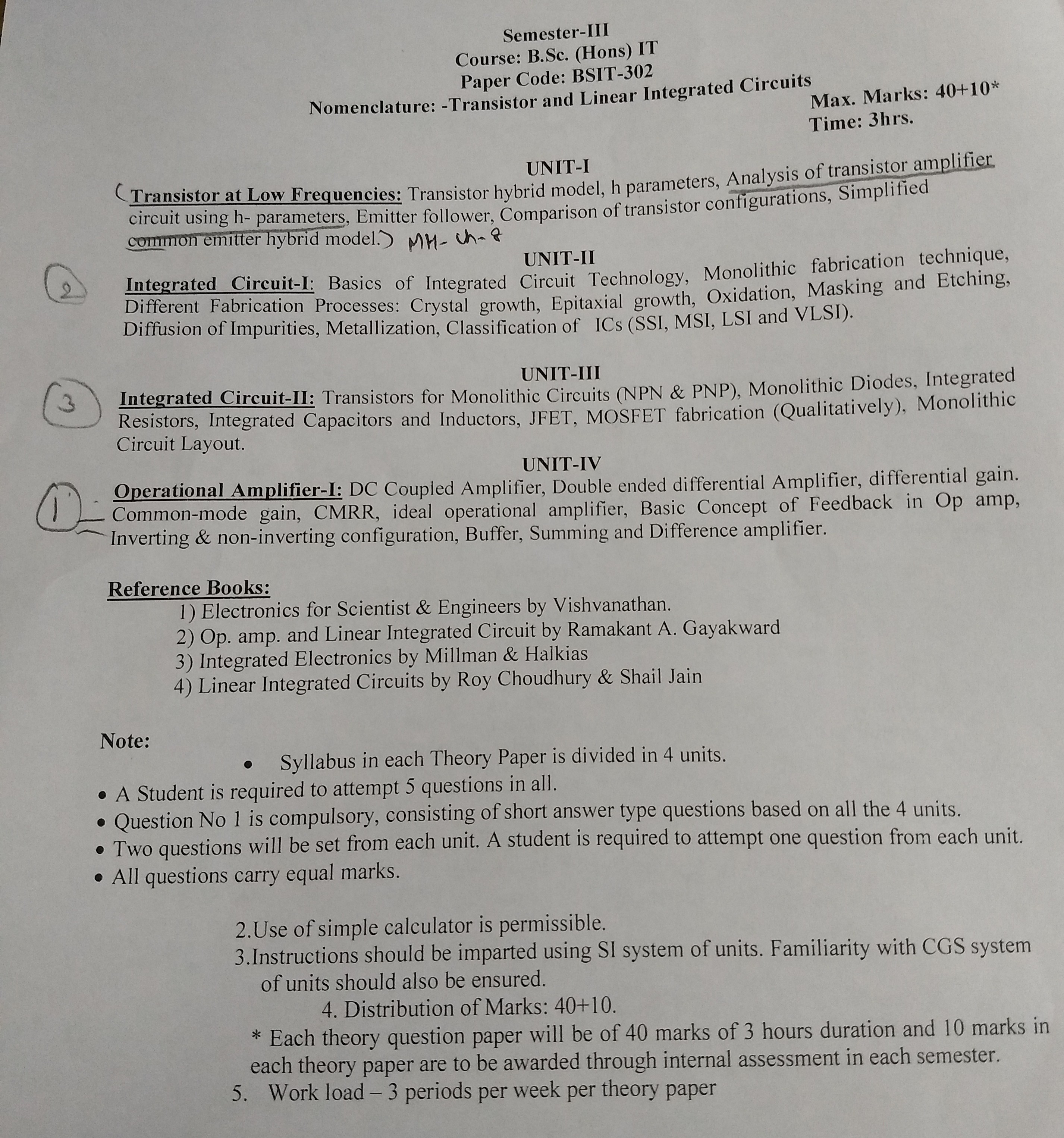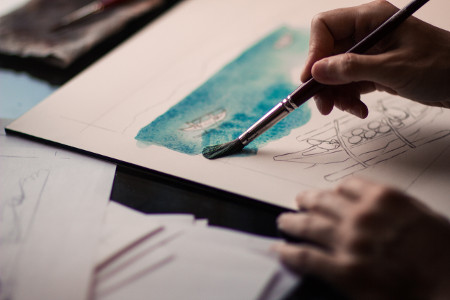
Transistor and Linear Integrated Circuits
In this subject we are going to do analysis of Transistor by using Hybrid parameters and
we will also learn about Linear integrated circuits and their fabrication processes.
In the final unit we will study about Operational Amplifier Op Amp.

Virtual Labs B.Sc IT-IInd Year
Course: B.Sc. (Hons) IT
Paper Code: BSIT-407
Nomenclature of Paper- Analog Electronics (I.T Lab-V)
List of experiments
I. To study op-amp as-
(a)Unity gain buffer stage
(b) Non-inverting amplifier
(c) Inverting amplifier
II To Study op-amp as-
(a) Summing amplifier
(b) Difference amplifier
(III) To study the operation of integrating/differentiating circuits using op- amplifier.
(IV) Measurement of offset voltage, bias currents & CMRR of an operational amplifier.
(V) To study the operation of a monostable multivibrator circuit and measure its delay time.
(VI) To design astable multivibrator and measure its frequency.
(VII) Study of UJT and its characteristics.
(VIII) Design a sawtooth generator using UJT.
(IX) To study & design Hartley Oscillator & measure its frequency.
(X) To study & design Colpitts Oscillator & measure its frequency.
(XI) To study the design of Phase Shift Oscillator & measure its frequency.
(XII) To study the condition for sustained oscillation for Wein bridge Oscillator.
(XIII) To study the working of Schmitt trigger using operational amplifier.
Semester-IV
Course: B.Sc. (Hons) IT
Paper Code: BSIT-408
Nomenclature of Paper - Digital Electronics (I.T Lab-VI)
1. A student is required to perform a minimum of 7 experiments from the list given below during
course of study(Semester III +Semester IV).
2. Instructions for Examiners: A candidate is required to perform one experiment.
3. Maximum number of students should not exceed ten in one group during course of studies as well
as annual examination.
List of Experiments:-
1. Half adder/Full adder.
2. Multiplexer and Demultiplexer Circuit (4: 1)
3. JK, D & T Flip-Flops.
4. Divide by N Counter.
5. Shift register
6. DAC
7. Ripple' binary counter.
8. Synchronous binary-counter.
9. Up. Down counter
10. Code Converter.
11. Parity generator
12. C. MOS Decade Counter

Virtual Labs for B.SC. IT 1st Year
This section is for Labs. Analog Electronics and Digital Electronics Labs experiments will be covered here.
Semester 1 & 2
Course: B.Sc. (Hons) IT
Paper Code: BSIT-208 (IT LAB-II)
Nomenclature: Digital Electronics (Practical)
LIST OF EXPERIMENTS
1. Measurement of voltage. Time period and phase-shift Biasing CRO.
2. Measurement of resistance by colour code method and using M/M and to design a
potential divider arrangement and familiarization of components such as capacitors,
potentiometer, diode, transistors, etc.
3. Study of basis logic gate (AOI).
4. Study of DTL NAND gate.
5. Study of TTL NANA gate.
6. Digital trainer using AOI.
7. Digital trainer using NAND.
8. To study of RC Ckts. As integrating and differentiating Ckts.
9. To verify maximum power transfer theorem for DC network
10. To study RC low pass filter and measurement of cut-off frequency from graph.
11. To study RC High pass Filter.
12. To study the application of Superposition theorem.
Semester 1 & 2
Course: B.Sc. (Hons) IT
Paper Code: BSIT-207 (IT LAB-I)
Nomenclature: Analog Electronics (Practical)
1. To study the V-I characteristics of PN junction diode.
2. To study the zener diode as voltage regulator.
3. To study half wave voltage multiplier Ckt. Using diode.
4. To study HWR and FWR and measurement of ripple factor with and with C filter.
5. To study diode as shunt clipping clement.
6. To study diode as clamping element.
7. Study of CB characteristics and calculate H parameter from graph.
8. Study of CE characteristics and calculate H parameter from graph.
9. Study of JFET characteristics.
10. To measure Av. Ai. Ap. In CB. CC Transistor amplifier.
11. Study of fixed bias arrangement for transistor.